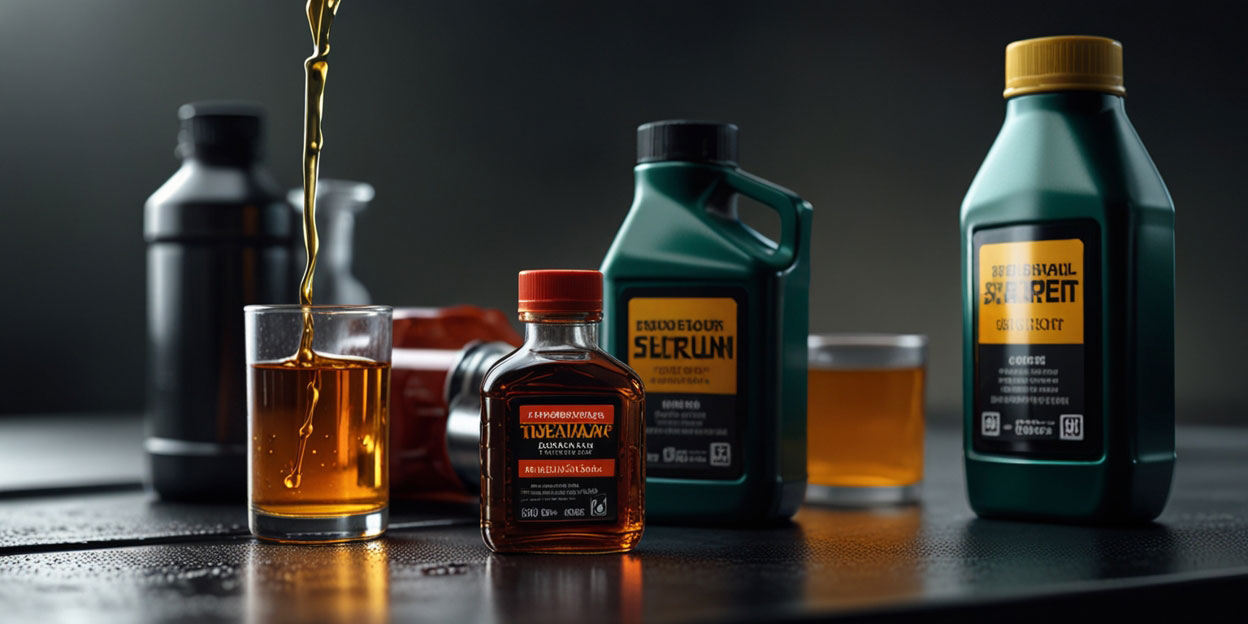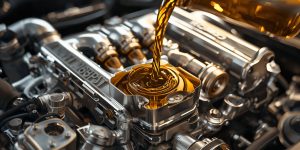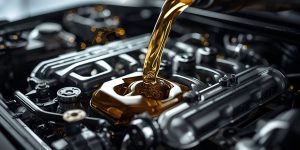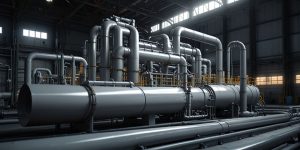When it comes to vehicle performance, few things are as critical — yet commonly misunderstood — as choosing the right lubricant. Many drivers know they need to monitor engine oil, but what about gear oil, differential oil, or even grease? These fluids play vital roles in ensuring your vehicle operates smoothly and efficiently under various conditions. Failing to understand the difference between them can lead to poor performance, premature wear, or costly repairs.
In this comprehensive guide, we’ll explore Engine Oil vs Gear Oil and take a deeper look at Differential Oil and Grease — their composition, functions, applications, and how SiNDA’s high-quality lubricants can help keep your vehicle in top shape.
What is Engine Oil?
Engine oil is the lifeblood of your engine. It serves multiple critical functions beyond just lubrication. At its core, engine oil reduces friction between moving parts, prevents metal-to-metal contact, minimizes wear and tear, and helps cool the engine by dissipating heat generated during combustion.
But that’s just the beginning. Modern engine oils — such as those offered by SiNDA — are formulated with advanced additives like:
- Detergents: To remove sludge and deposits
- Dispersants: To keep contaminants suspended and prevent buildup
- Antioxidants: To resist thermal breakdown and oxidation
- Friction modifiers: To enhance fuel economy
- Anti-wear agents (e.g., ZDDP): To protect internal parts like camshafts and bearings
Engine oils are rated by the SAE viscosity grading system (e.g., 5W-30, 10W-40), which indicates the oil’s flow characteristics in both cold and hot temperatures. These oils must maintain a stable film even under extreme pressure and high RPM, making them essential for internal combustion engines.
What is Gear Oil?
Gear oil is a specially formulated lubricant used to protect transmission systems, differentials, and gearboxes. Unlike engine oil, which primarily handles high temperatures and combustion byproducts, gear oil is engineered to withstand extreme pressure, shock loading, and metal-to-metal contact that commonly occur in gear systems — especially in hypoid gears found in differentials.
Gear oils are typically more viscous and are enhanced with a distinct set of chemical additives that allow them to:
- Handle boundary lubrication (when oil films break under pressure)
- Prevent wearing and scoring on gears
- Minimize foaming during high-speed rotation
- Protect against rust, corrosion, and oxidation
- Reduce gear noise and vibration
- Extend component life under load stress
Gear oil is rated using the API GL classification system, with common types including:
- GL-4: Suitable for synchronized manual transmissions
- GL-5: Required for hypoid gears under extreme pressure (e.g., automotive differentials)
The SAE viscosity numbers for gear oils (e.g., SAE 75W-90, SAE 80W-140) may appear thicker than engine oil grades, but this is due to a different viscosity scale. For instance, SAE 90 gear oil has a viscosity comparable to SAE 40 engine oil in operating temperatures.
Gear Oil vs Engine Oil: What Are the Key Differences?
While both engine and gear oils are lubricants, their formulation, function, and performance expectations differ significantly. Here’s how:
| Feature | Engine Oil | Gear Oil |
| Primary Use | Internal combustion engines | Transmissions, differentials, gearboxes |
| Viscosity Rating | SAE 5W-30, 10W-40, etc. | SAE 75W-90, 80W-140, etc. |
| Additives | Detergents, dispersants, antioxidants | Extreme-pressure (EP) additives, anti-foam, rust inhibitors |
| Temperature Resistance | Handles high heat from combustion | Designed for high-pressure and shock loads |
| Lubrication Type | Hydrodynamic film lubrication | Boundary lubrication is common |
| Foam Handling | Less prone to foaming | Contains anti-foam agents due to gear rotation |
| Typical Applications | Engines of cars, trucks, machinery | Manual transmissions, differentials, heavy equipment |
The high extreme-pressure (EP) demands of gear systems, especially in hypoid and spur gears, necessitate stronger and more durable lubricants. That’s why SiNDA gear oils are designed with robust EP formulations to ensure long-lasting protection even under punishing conditions.
What is Differential Oil?
Differential oil — sometimes referred to as axle oil — is a subtype of gear oil specifically formulated for differentials, the mechanisms that allow your car’s wheels to rotate at different speeds, especially during turns. Differentials are typically located at the rear axle in rear-wheel-drive vehicles and require specialized lubrication due to the hypoid gear design they use.
Unlike standard gearboxes, differentials experience intense sliding friction and torque loads, requiring lubricants that can:
- Withstand extreme pressure contact
- Maintain film strength under high load and temperature
- Prevent metal wear in hypoid gear interfaces
- Suppress foam and air entrapment
- Protect against moisture, rust, and oxidation
Differential oil must meet or exceed API GL-5 standards — a level of performance that ensures compatibility with hypoid gear action, which involves both sliding and rolling motion under high torque.
Signs Your Vehicle May Need a Differential Oil Change:
- Whining or grinding noises during turns
- Burning smell from rear axle
- Leaking differential fluid
- Shuddering or vibration when accelerating
Differential Oil vs Gear Oil vs Engine Oil: Quick Comparison
| Property | Engine Oil | Gear Oil | Differential Oil |
| Use Case | Internal engine parts | Manual transmission and gearboxes | Rear/front axles and differentials |
| Additive Package | Detergents, dispersants, anti-wear | EP, anti-foam, rust inhibitors | Enhanced EP, anti-scuff, GL-5 standard |
| Viscosity Range | SAE 5W-30 to 20W-50 | SAE 75W-90 to 85W-140 | SAE 80W-90 to 75W-140 |
| Common Standard | API SN, SP | API GL-4 | API GL-5 |
| Exposure Type | Heat, combustion gases | High-pressure gear contact | Hypoid gear action & extreme pressure |
What is Grease and How Is It Different from Oil-Based Lubricants?
Grease is a semi-solid lubricant made by combining a base oil (often mineral or synthetic), a thickener (commonly lithium, calcium, or aluminum soap), and various additives. Unlike engine or gear oils, which are free-flowing liquids, grease stays in place, making it ideal for components where oil retention is difficult or where long-term lubrication is necessary without frequent maintenance.
Key Components of Grease:
- Base Oil (70–90%): Can be mineral or synthetic and determines the grease’s lubrication properties
- Thickener (5–15%): A soap-based or clay-based agent that gives grease its consistency
- Additives (5–10%): Anti-wear, anti-corrosion, extreme-pressure (EP), and anti-oxidation agents
Where Is Grease Used?
- Wheel bearings
- Ball joints and U-joints
- Chassis components
- Electric motor shafts
- Industrial machinery
Grease is preferred in systems where:
- Continuous oil circulation is not feasible
- There’s a risk of lubricant leakage
- Protection against dust, water, or contaminants is critical
- Components are infrequently serviced
Grease vs Gear Oil vs Engine Oil vs Differential Oil
| Feature | Grease | Engine Oil | Gear Oil | Differential Oil |
| State | Semi-solid | Liquid | Liquid | Liquid |
| Base | Oil + Thickener | Oil | Oil | Oil |
| Use Case | Bearings, joints, closed fittings | Engines | Transmissions, gearboxes | Differentials |
| Circulation | Static | Pumped | Splash-fed / pumped | Splash-fed |
| Retention | Excellent | Moderate | Moderate | High |
| Temperature Handling | Moderate | High | High | Very High |
| EP Additives | Yes (if needed) | Sometimes | Yes | Yes (stronger) |
| Re-lubrication Interval | Long | Short | Medium | Long |
Why Use Grease?
Grease serves as a barrier lubricant, offering protection in extreme environments where oils would flow away, evaporate, or leak. It’s particularly useful in sealed systems, where re-lubrication is infrequent and mechanical accessibility is limited.
For example, SiNDA multipurpose lithium-based greases are engineered for long-lasting performance, water resistance, and high load-bearing capacity, making them ideal for off-road, marine, and industrial applications.
Complete Comparison: Engine Oil vs Gear Oil vs Differential Oil vs Grease
Understanding which lubricant is best for each application can be confusing — especially since they often look similar. However, each has a specific formulation, function, and operating condition. Here’s a full side-by-side comparison:
| Criteria | Engine Oil | Gear Oil | Differential Oil | Grease |
| State | Liquid | Liquid | Liquid | Semi-solid |
| Primary Function | Lubricates internal engine parts, reduces friction, handles combustion byproducts | Lubricates manual transmission and gears under load | Protects hypoid gears in axles from wear and pressure | Stays in place to lubricate joints, bearings, and enclosed systems |
| Viscosity Rating System | SAE (e.g., 5W-30) | SAE (e.g., 75W-90) | SAE (e.g., 80W-90) | NLGI grades (e.g., NLGI 2) |
| Additives | Detergents, dispersants, anti-wear, antioxidants | EP additives, anti-foam, rust inhibitors | Enhanced EP additives (GL-5), anti-scuff | EP, anti-oxidants, water resistance |
| Lubrication Type | Hydrodynamic film | Boundary & film | Boundary with EP focus | Static barrier lubrication |
| Operating Conditions | High temperature & RPM | High torque & pressure | Extreme pressure & sliding | Low to moderate speed, sealed systems |
| Replacement Interval | 10,000 – 15,000 km | 60,000 – 100,000 km | 80,000 – 120,000 km | Long-term (depends on application) |
| Common Applications | Internal combustion engines | Manual transmissions | Differentials in cars, trucks, SUVs | Wheel bearings, ball joints, chassis lube points |
| Recommended Brand | SiNDA Engine Oil | SiNDA Gear Oil | SiNDA GL-5 Differential Oil | SiNDA Multi-Purpose Grease |
Summary of Use Cases:
- Use engine oil if you’re lubricating engine components exposed to heat and combustion.
- Use gear oil for manual transmissions and industrial gearboxes that deal with pressure and shock loads.
- Use differential oil when servicing axles or hypoid gears requiring GL-5 level protection.
- Use grease in sealed or hard-to-access areas like bearings, chassis points, or slow-moving mechanical joints.
Lubricant Maintenance: When to Change and What to Watch For
Using the right lubricant is only part of the story — maintaining it properly is equally important. Over time, all lubricants degrade, collect contaminants, or lose their performance properties. Here’s how to stay on top of each type:
Engine Oil Maintenance
- Change Interval: Every 10,000 to 15,000 km (or 6–12 months)
- Check Frequency: Every 2–4 weeks or before long trips
- Signs It Needs Changing:
- Dark, dirty oil on dipstick
- Engine running rough or noisier than usual
- Dashboard oil warning light
🔧 Pro Tip from SiNDA: Always use the oil grade and specification recommended in your vehicle’s manual. Using the wrong grade can affect fuel economy and cause internal engine damage.
Gear Oil Maintenance
- Change Interval: Every 60,000 to 100,000 km (varies by vehicle)
- Check Frequency: During major services or if shifting feels rough
- Signs It Needs Attention:
- Difficulty shifting gears (manual transmission)
- Whining or grinding noise
- Oil leaks under gearbox
SiNDA Tip: Don’t mix different API GL-rated gear oils (e.g., GL-4 vs GL-5) unless the product clearly supports both specifications.
Differential Oil Maintenance
- Change Interval: Every 80,000 to 120,000 km
- Check Frequency: With transmission service or if symptoms arise
- Signs It Needs Replacing:
- Vibration during acceleration
- Noises from rear or front axle
- Fluid seepage near differential casing
Important: If you’re towing heavy loads or driving in extreme terrain, differential oil degrades faster — consider changing more frequently.
Grease Maintenance
- Reapplication Interval: Ranges from 6 months to several years depending on application and environment
- Common Service Points: Bearings, ball joints, U-joints, trailer axles
- Signs It Needs Re-Greasing:
- Squeaking or resistance in joints
- Rust appearing near pivot points
- Component failure due to dry contact
SiNDA Suggests: Use NLGI Grade 2 grease for general-purpose automotive applications unless otherwise specified.
Regular Maintenance Checklist
| Task | Frequency |
| Check engine oil level | Every 2–4 weeks |
| Change engine oil | Every 10,000–15,000 km |
| Inspect for oil leaks (engine, gearbox, diff) | Monthly |
| Replace gear oil | Every 60,000–100,000 km |
| Replace differential oil | Every 80,000–120,000 km |
| Re-grease joints | 6–12 months (or per OEM manual) |











